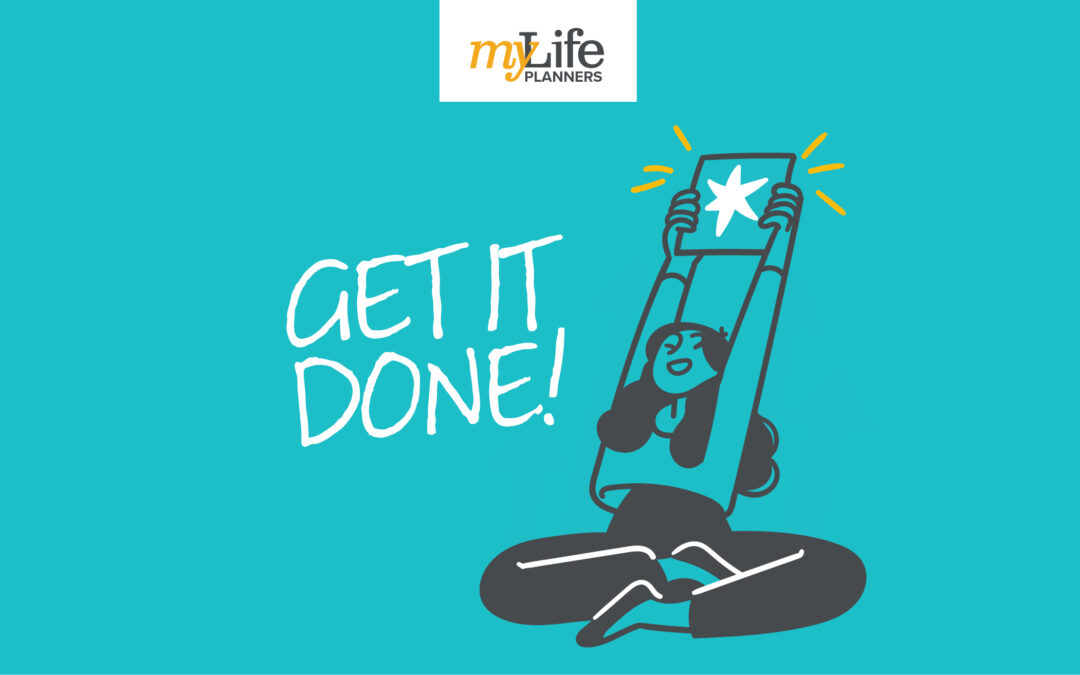Creating categories for time blocks will help you stop avoiding your top-priority task.
While developing myLife tools, I learned from ADHD customers that they love the systems. The feedback has been wonderful and given me a gift to learn about their neurodiversity in a way that shows how their unique perspectives just need tools that fit them. So the more I learn about neurodiversity, the more I can develop messaging and create myLife resources that offer actionable strategies and ideas.
In order to learn more about the ADHD mindset, I joined Jorie Houlihan‘s Facebook group, Women Discovering Their ADHD in Adulthood.
I came across a post about how utilizing the latest app and trending day planner hasn’t been the answer to getting their most important priority done. Summarizing the feedback, a specific tool used isn’t the answer. It’s more important to understand how your brain works and then choose a tool you can MAKE WORK FOR YOU.
For example, a flathead screwdriver was created to turn screws, but I’ve also used it to open paint cans. A tool is a thing, not a solution; the solutions come from the user.
I related to her struggle and was inspired to create a solution that reduced distractions and provided steps to help manage time for each task. The answer isn’t as simple as only putting ONE item on your list… adulting requires us to do more in a day. But puking up the whole list, even for me, makes one feel like a deer in headlights – paralyzed and not sure which direction to go.
I’ve had a project that I’ve been putting off. I know if I accomplished it, I’d no longer have this annoying sense of having to do something. (Yes, it’s still on my list pushed forward from weeks ago.) I realized I’m at a point to suck it up and get it done, delegate, OR deal with the consequences. Just say no.
I came up with a system with 8 steps to stop avoiding your most important task:
Grab yourself a couple of blank lined pages. I am using the Day to Day NOTEPAD as my example.
- Create Buckets (categories)
- Fill in your tasks beneath the buckets they work in.
- Estimate the time for each task, then total the bucket time.
- Write out your schedule for the day (meetings, appointments, etc.).
- Highlight the blocks of unused time.
- Assign each bucket to a time block.
- During a time block – write out your top priority task next to the schedule, and once complete, check it off, then add in the next task from that block. Continue for each time block. You may not complete each bucket – that’s okay.
- Review at the end of the day. Highlight what you didn’t get to. Then decide to either A. Move to the next day. B. Delegate or C. Delete it. There is always a consequence to not doing something. This is your chance to evaluate if you are okay with them and how it makes you feel. I know if I feel lighter at the concept of not doing something even with the consequences – then yay, I get to say no so I can say yes to something else that lights me up or moves me forward.
You can read the full post with visuals here.
By Crystal Reynolds, myLife Planners
Content provided by Women Belong member Crystal Reynolds












































 Connections - ZOOM Networking Event
Connections - ZOOM Networking Event Wellness Down There: Solutions for Pelvic Health & Live Demo
Wellness Down There: Solutions for Pelvic Health & Live Demo Communicating With Confidence
Communicating With Confidence Tech & Sip
Tech & Sip Women Belong Book Club: The Four Agreements
Women Belong Book Club: The Four Agreements